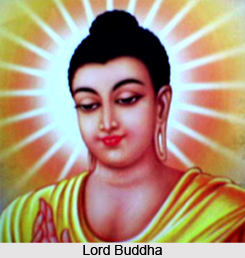 As far as the administration of the Licchavis is concerned it can be said that the Licchavis formed a republic in the sense that there was no hereditary monarch, the power of the State being vested in the assembly of citizens. It does not appear to have been a completely democratic republic, but an oligarchy, citizenship being confined to members of the confederate clans. The Licchavis formed what was called a samgha or gana, that is, an organised corporation.
As far as the administration of the Licchavis is concerned it can be said that the Licchavis formed a republic in the sense that there was no hereditary monarch, the power of the State being vested in the assembly of citizens. It does not appear to have been a completely democratic republic, but an oligarchy, citizenship being confined to members of the confederate clans. The Licchavis formed what was called a samgha or gana, that is, an organised corporation.
It has been mentioned in the Arthasashtra of Kautaliya that among the Licchavis each citizen had the right to call himself a raja, `king`, i.e. a dignitary who did not owe allegiance or pay revenue to any one else. Each citizen not merely looked upon himself as a raja, but considered that his title should be recognised not only by his fellow clansmen but also by the other people of India. Kautilya observes that all these samghas by virtue of their being united in such corporations were unconquerable by others. He had further observed that for a king, a corporation was the best and most helpful of all allies, because of the power derived from their union which made them invincible.
The public hall where the Licchavis used to hold their meetings was called the Santhagara, and there they discussed both religion and politics. It has also been said that in those public halls the Licchavis also discussed the teachings of Lord Buddha. As in the Buddhist congregation, so among the Licchavis, the elders of the clans were highly respected, as we see from the Mahaparinibadna Suttanta.
The disputes among the Licchavis were settled by the votes of the majority and this voting was by ballot; voting tickets were served out to the voters, and an officer of approved honesty and impartiality was elected to collect these tickets or voting papers. The appointment of this officer was also made by the whole assembly. There was also a provision for taking the votes of absent members. From all these it is evident that the political organisation among the Licchavis was very strong.
History states that an Uparaja or Viceroy, a Senapati or general, and a treasurer formed the private staff of every Licchavi Raja. Each Raja had personal property of his own which was managed by him with the help of these three officers. There were officers who recorded the decisions of the Council.
The Atthakatha has given an account of the judicial procedure among the Licchavis. When a person who had committed an offence appeared before the Vajjian rajas, they surrendered him to the Viniccaya-Mahamattas, i.e. officers whose business it was to make enquiries and examine the accused with a view to ascertaining whether he was innocent or guilty. If they found the man innocent, they released him; but if they considered him guilty, they made him over to the Vohdrikas, i.e. persons learned in law and custom. These could discharge him if they found him innocent; if they held him guilty, they transferred him to certain officers called Suttadhdras, that is, officials who kept up the sutra (sutta) or thread of law and custom. They in their turn made further investigation, and if satisfied that the accused was innocent, they discharged him. If, however, they considered him guilty, he was made over to the Atthakulaka which was evidently a judicial institution composed of judges representing the eight kulas or tribes of the confederacy.
The Atthakulaka if satisfied of the guilt of the accused, made him over to the Senapati or commander of the array, who delivered him over to the Uparaja or sub-king, and the latter in his turn handed him over to the Raja. The Raja released the accused if he was innocent; if he was found guilty, the Raja referred to the Pavenipotthaka, that is, the pustaka or book recording the law and precedents, and prescribing the punishment for each particular offence. The Raja having measured the culprit`s offence by means of that standard, used to inflict a proper sentence to him.
















